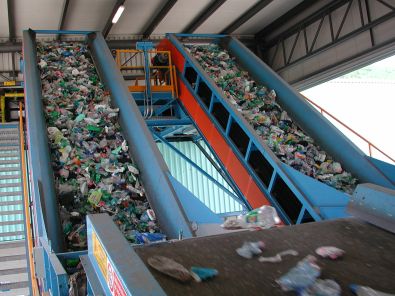In the framework of “Waste Cycle Integrated Management” general development, technological innovation plays a fundamental role.Researching new technical and scientific solutions together with their practical application will improve the range of strategies aiming to recover and recycle waste, reducing the quantity destined for dump sites and at the same time to update the industrial production processes in order to increase the level of a general eco-sustainability.
Since the beginning of the ‘90s in fact, many countries regulations shift the burden of packaging waste disposal costs on the producers, according to a basic principle that can be summed up as “ He who pollutes, pays”
Many entrepreneurs, hence, have started to invest more and more in technologies able to automatize and facilitate the recycling processes.
One of the main obstacles to the development of a recycling chain is the fact that most of the products have been designed and manufactured without thinking about their possibility to be recovered.
“Waste is a design flaw”, Kate Krebs, US National Recycling Coalition executive director, has said in this regard.
At the international level, the need to develop studies and researches in the area of new technologies applied to the collection, disposal and recycle of waste, has increasingly gained attention, in fact, in 2007, in Sweden, at the Chalmers University for Technology, the first university chair in the world dedicated to the “Industrial Recycling” has been created.
Christian Ekberg, its chair professor, states that “recycling offers a set of potential advantages both in financial and research terms. The development of new methods for recycling on industrial scale is very important and represents a crucial challenge, absolutely necessary for our society to develop in a sustainable way and protect the environment”.
To make some examples of a technology applied to this sector, we can mention the “infrared rays spectrograph”. Paper or plastic waste are usually placed on a conveyer belt arranged in a single layer; when this is hit by the beam of a halogen lamp every material reflects a specific combination of colours allowing the material to be identified and, subsequently, a compressed-air blast will remove it from the rest. This system allows the separation of several types of materials with a precision range close to 98%.
Another way to separate waste is the so called “removal of iron” which takes advantage of the metals electric charge to separate them from the rest of the materials collected. Specifically, a special force field is created with an inverse magnetic force, which causes the ejection of iron-made materials from the waste placed on the belts.
Another technology allowing a reduction of the environmental impact caused by the unseparated waste (such as bad smells and biogas production) is the Biostabilization that, recently, has become popular in Italy as well. The biostabilized matter produced from Municipal Solid Waste (MSW), obtained through a special mechanical-organic treatment (MOT.) to be performed before any following step, is particularly appropriate for various applications aimed to the daily cover of dump sites, cutting, consequently, methane emissions (one of the main gases used to accelerate combustion processes), recovering biogases and any Waste Derived Fuel (as known as WDF and obtained removing the organic components of food or farming waste and not combustible materials such as glass and metals) to send to appropriate facilities.



